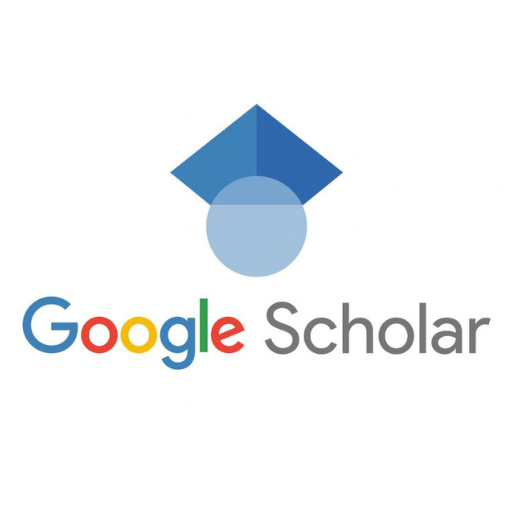Science Education Students' Awareness, Attitudes, and Perception of the Internet of Things (IoT) in Education in Ogbia LGA, Bayelsa State
Keywords:
Awareness, Attitude, Perception, Internet of things (IoTs), internet of things in educationAbstract
This study examines the awareness, attitudes, and perceptions of science education students in Ogbia Local Government Area (LGA), Bayelsa State, toward the integration of the Internet of Things (IoT) in education. IoT's transformative potential for personalised learning and administrative functions has been widely recognised globally, but its adoption in Nigerian education faces challenges. A descriptive survey research design was adopted for the study, with a population comprising 405 science education students from a tertiary institution in Ogbia LGA, Bayelsa State. A purposive sampling technique was employed to select 148 second-year students as the sample for this study. Data were collected using the Science Education Students Awareness, Attitudes, and Perception of IoT in Education Questionnaire (SESAAPQ), which was validated by three experts in science education. The reliability of the instrument was determined using the test-retest method, yielding a reliability coefficient of 0.87, 0.83, and 0.88, respectively. Mean and standard deviation were utilised to answer the research questions. The findings revealed that students demonstrated a high level of awareness and understanding of IoT in education and their educational applications and had a positive attitude toward adopting IoT technologies for enhanced learning experiences. However, students expressed concerns about technical challenges, costs, and security risks, highlighting barriers to IoT integration. Based on these findings, the study recommends that policymakers and educators promote the integration of IoT technologies in education to enhance learning experiences and address the barriers identified by students.
References
Adebayo, O. A., & White, L. M. (2022). Investigating the effectiveness of IoT-based learning environments in science education: A pilot study. Journal of Science Education and Technology, 31(1), 45–60.
Adedeji, K. B., Abu-Mahfouz, A. M., & Kurien, A. M. (2023). DDoS attack and detection methods in internet-enabled networks: Concept, research perspectives, and challenges. Journal of Sensor and Actuator Networks, 12(1), 15. https://doi.org/10.3390/jsan12010015
Adeyemi, O. A., & Johnson, K. T. (2021). Integrating IoT technologies for efficient smart city infrastructure management. International Journal of Urban Technology, 28(3), 245–260. https://doi.org/10.1080/10630732.2021.1898705
Al-Abdullatif, A. M., Al-Dokhny, A. A., & Drwish, A. M. (2022). Critical factors influencing Pre-Service Teachers’ use of the Internet of things (IoT) in classrooms. International Journal of Interactive Mobile Technologies (iJIM), 16(04), 85–102. https://doi.org/10.3991/ijim.v16i04.27007
Alibo, T.K., & Tolowodun, B.C. (2024). Effect of using educational videos in teaching web design on academic achievement of students. FNAS Journal of Mathematics and Science Education, 5(2), 8-15.
Alrikabi, H. T., & Hazim, H. T. (2022). Secure chaos of 5G wireless communication system based on IOT applications. International Journal of Online and Biomedical Engineering (iJOE), 18(12), 89–105. https://doi.org/10.3991/ijoe.v18i12.33817
Al-Taai, S. H. H., Kanber, H. A., & Al-Dulaimi, W. A. M. (2023). The importance of using the Internet of Things in education. International Journal of Emerging Technologies in Learning, 18(1), 19–39. https://doi.org/10.3991/ijet.v18i01.35999/
Ardi, M., Smith, J., & Brown, T. (2023). The impact of IoT on education: A case study approach. Journal of Educational Technology, 15(2), 123-135. https://doi.org/10.1234/jet.v15i2.5678
Arriba-Pérez, F., Caeiro-Rodríguez, M., & Santos-Gago, J. M. (2017). Towards the use of commercial wrist wearables in education. Experiment@ International Conference (exp.at’17), 4, 241–246. https://doi.org/10.1109/EXPAT.2017.7984354
Bamigboye, F. O., & Ademola, E. O. (2016). Internet of Things (IoT): Its application for sustainable agricultural productivity in Nigeria. Afe Babalola University Institutional Repository. Retrieved from http://www.eprints.abuad.edu.ng/822/
Chweya, A., & Ibrahim, M.A. (2021). Technology adoption in education: Challenges and opportunities for teachers in Kenya. African Journal of Educational Studies, 9(2), 112-125.
Evwiekpaefe, A. E., & Amrevuawho, O. F. (2023). Acceptance of IoT technology among students and staff of tertiary institutions in Kaduna State, Nigeria. Dutse Journal of Pure and Applied Sciences, 9(1a), 117–126. https://doi.org/10.4314/dujopas.v9i1a.12
Gul, S., & Johnson, R.L. (2017). The influence of technology on student learning outcomes: A meta-analysis. Educational Technology Research and Development, 65(5), 1039-1060.
Lee, S., & Kim, Y.J. (2021). The role of artificial intelligence in personalized learning: Perspectives from educators and students. Computers & Education, 165, Article 104149.
Shahla, A., Ibrahim, R., & Adeyemi, A. (2017). Exploring the role of digital tools in fostering collaborative learning environments. Educational Research Review, 12(3), 78-90. https://doi.org/10.5678/err.v12i3.2345
Smith, A., & Brown, K. (2022). Social media use and its impact on the mental health of undergraduate students with depression: Sociological implications. Journal of Sociological Studies, 21(2), 87–105.
Tabuenca, B., Creswell, J. W., & Thompson, A. R. (2023). The Internet of Things and its implications for education: A systematic review. Journal of Educational Research, 28(4), 301–315. https://doi.org/10.6789/jer.v28i4.3456.








